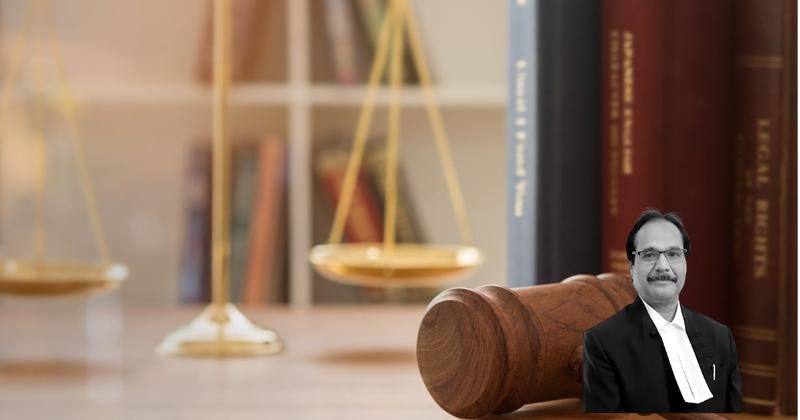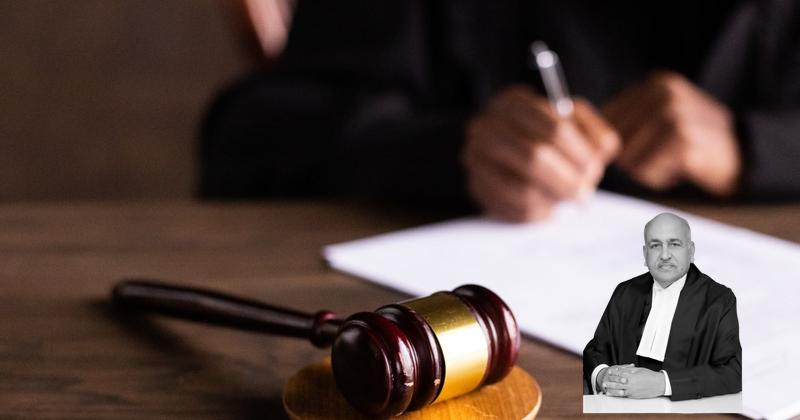A riveting legal saga unfolds as the Supreme Court of India scrutinizes the case of criminal conspiracy and murder involving Smt. Gargi Devi. The judgment dissects the evidence presented against her in the murder of her husband through strangulation. Amidst a web of circumstantial facts and theories, the apex court’s decision sheds light on the complexities of establishing guilt in cases based on circumstantial evidence. Let’s unravel the intricacies of this landmark judgment.
Facts
- The Trial Court convicted the appellant for criminal conspiracy and murder, sentencing her to life imprisonment.
- The conviction was based on medical evidence indicating strangulation and other circumstances like the door not being bolted from inside.
- The High Court affirmed the conviction of the appellant but acquitted her brothers.
- The appellant was found guilty as the principal offender despite lack of evidence on other accomplices.
- The High Court rejected the defense evidence and disbelieved the testimony of a witness introduced by the appellant.
- The appellant’s appeal against the High Court’s judgement was based on the conviction for murder of her husband through strangulation.
- The Trial Court found all accused guilty while the High Court acquitted the co-accused brothers but maintained appellant’s murder conviction.
- The High Court’s decision was supported by medical evidence and crime scene features, concluding it was a case of homicide.
- The appellant’s behavior after the incident was deemed questionable, reinforcing her guilt.
- The High Court rejected evidence of a conspiracy between the appellant and her brothers for the murder.
- Based on findings, the High Court upheld the appellant’s conviction but acquitted her brothers due to lack of conspiracy evidence.
- The deceased, Tirloki Nath, expressed fear that his wife, Smt. Gargi Devi, might kill him due to her illicit relations and desire to grab his property.
- The complainant, Brij Bhushan Kaul, mentioned the strained relationship between the deceased and the appellant, residing in separate rooms in the same house.
- The deceased once expressed his fear that his wife might leave the gas cylinder open to kill him.
- Witnesses observed ligature marks on the deceased’s neck, indicating strangulation as the cause of death.
- The prosecution claimed that the deceased’s wife and her brothers were involved in the murder, while the defense denied the accusations.
Also Read: Constitutional Validity of Domicile-based Reservation in PG Medical Courses
Arguments
- The appellant’s counsel argued that the appellant was falsely implicated by her in-laws who aimed to grab the deceased’s property.
- There was no connecting link to associate the appellant with her husband’s murder, and the prosecution failed to prove her motive.
- Police collecting evidence had lapses, with the FIR registered only after the complainant and his family arrived, and statements of witnesses at the scene were not recorded.
- The appellant’s counsel disputed the finding of strangulation, citing the absence of typical marks on the body as per medical jurisprudence.
- Reference was made to previous court decisions to support the appellant’s case.
- The prosecution asserts that the appellant covertly tried to pass off the homicide as a suicide, with established motives and intent.
- The deceased was last seen with the appellant, who failed to explain his death and hanging.
- The appellant’s absence during the period of the deceased’s death raises suspicion.
- Evidence suggests a homicidal death instead of suicide.
- Relations with the appellant, motives for property transfer, and deceased’s expressed fear of danger are highlighted.
- Post-mortem report and appellant’s presence at home during the death timeframe are crucial.
- The prosecution argues that minor discrepancies in witness statements do not weaken the case.
- The defense claims it was a suicide due to a lack of motive and a purported happy marriage.
- Fundamental flaws in investigation and prosecution propositions raise doubts about the conviction.
- An alternative theory of strangulation by the appellant and an accomplice to stage suicide is proposed.
Also Read: Land Reforms Act: The Legacy of Gutya – Timma Dispute
Analysis
- Case law emphasizes the essentials for proving a fact through the proof of other facts.
- Circumstantial evidence in a criminal case must satisfy three tests: cogently established circumstances, definite tendency towards guilt, and a complete chain of circumstances pointing to the accused’s guilt.
- The defence version should not have any possibility of being true.
- The golden principles for proving a case based on circumstantial evidence include five key points such as fully establishing circumstances leading to guilt and excluding any other hypothesis except the accused’s guilt.
- Every circumstance in a case based on circumstantial evidence must be proved beyond reasonable doubt and form a complete chain of evidence indicating the accused’s guilt.
- The ‘last seen theory’ applies when the time gap between the accused and the deceased being last seen alive and the deceased being found dead is so small that no other person could have committed the crime.
- These principles are essential in establishing guilt in cases based on circumstantial evidence.
- The prosecution has raised suspicion against the appellant but failed to establish implicating circumstances with cogent evidence.
- The chain of circumstances presented is not complete and does not rule out other possible hypotheses except guilt.
- Due to the lack of conclusive evidence, the conviction of the appellant cannot be sustained.
- The appellant is entitled to the benefit of doubt and is acquitted of the charges under Section 302 IPC.
- The impugned judgment convicting the appellant is set aside, and her bail bonds are canceled with sureties discharged.
Also Read: State of Rajasthan v. Sheeshpal: Upholding Justice and Fairness
Case Title: GARGI Vs. STATE OF HARYANA
Case Number: Crl.A. No.-001046-001046 / 2010



